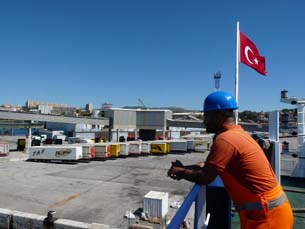12/12/2018
Les complexités socio-économiques liées au changement climatique : Vers un agenda de recherche et des actions UE-Med (Compte rendu de l’atelier COP24)
Le 12 décembre 2018, le deuxième atelier co-organisé par l’Union pour la Méditerranée, FEMISE, Institut de la Méditerranée et Energies2050 s’est tenu à la Cop24 à Katowice, en Pologne. Intitulée « Les subtilités socio-économiques liées au changement climatique pour un agenda et des actions de recherche euro-méditerranéens », cette table ronde a été particulièrement riche en discussions autour du rôle de la recherche dans l’action pour le climat, en général et de la collaboration entre les parties prenantes afin de susciter le changement social, en particulier.
En effet, Jorge Borrego, Secrétaire général adjoint pour l’énergie et l’action pour le climat au Secrétariat général de l’Union pour la Méditerranée (UpM), a souligné que « une action continue et coordonnée entre les parties prenantes et les experts est la clé pour optimiser la lutte contre le changement climatique ». Le Secrétaire général adjoint UpM a ajouté que pour poser des questions pertinentes et proposer des solutions novatrices aux obstacles structurels locaux et régionaux, nous devons prendre en compte les différentes approches des problèmes de développement durable dans le domaine de la recherche mais aussi les initiatives sur le terrain de lutte contre le changement climatique. Jorge Borrego a ajouté que l’approche de l’UpM en matière d’action pour le climat consiste à travailler avec les 5 acteurs clés des négociations sur le changement climatique dans le sud de la Méditerranée, à savoir la population, les gouvernements et les autorités infranationales, les acteurs du secteur privé, les instituts de recherche et les experts, ainsi que les ONG locales, régionales et euro-méditerranéennes. Comme l’a dis Jorge Borrego: «Concernant les populations, il est essentiel de parler avec elles, et pas seulement d’elles».
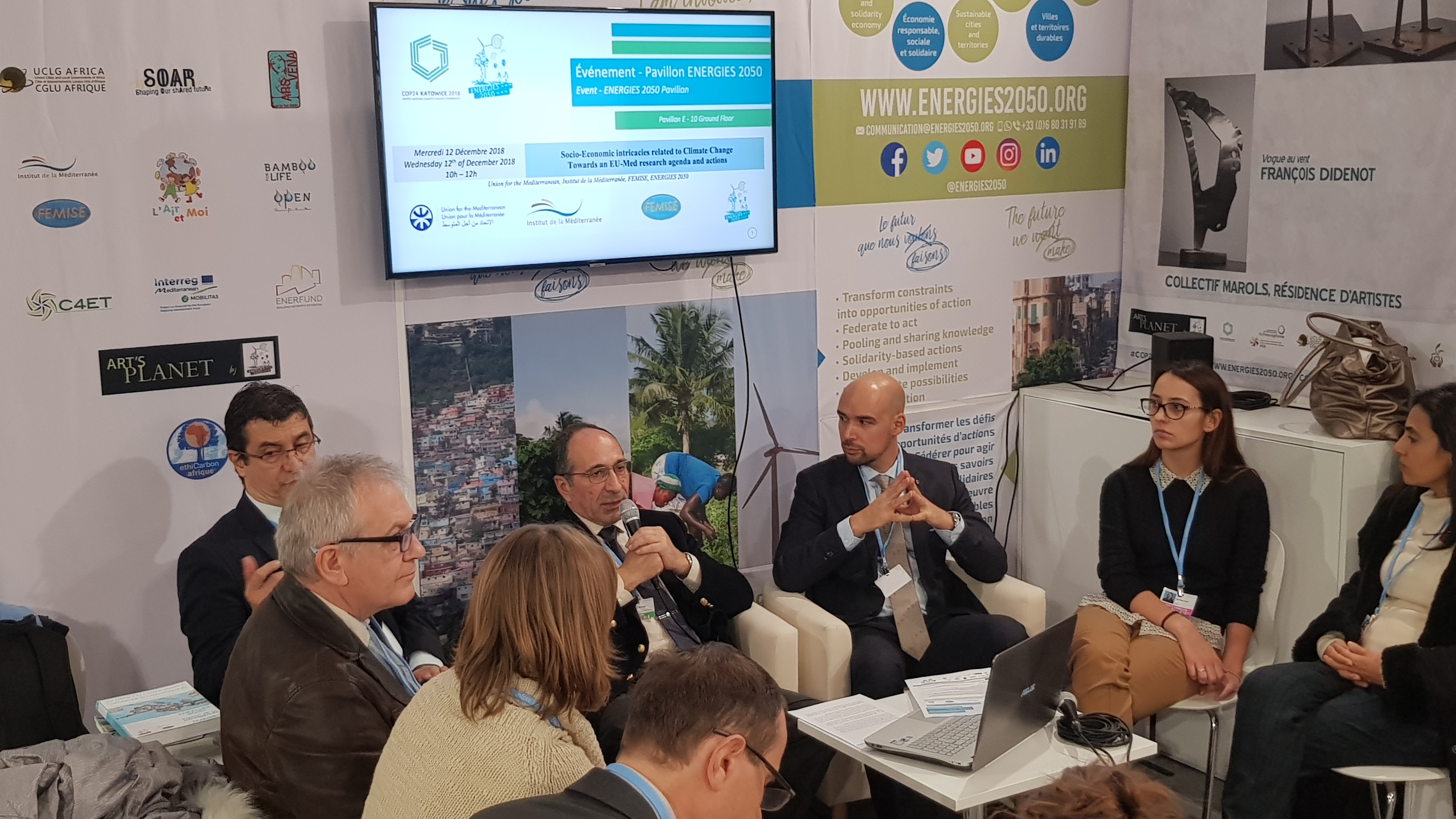
COP24, Katowice, Pologne, pavillon ENERGIES2050
Une des récentes collaborations de l’UpM est avec le MEDECC, un réseau d’experts basé à Marseille pour appuyer la prise de décision. Joël Guiot, expert de MEDECC, a participé à l’atelier où il a présenté le rôle de MEDECC en tant que plate-forme scientifique essentielle, pour informer toutes les parties prenantes concernées des dernières connaissances concernant le changement climatique. Il a souligné qu’afin de préparer de meilleures évaluations et une synthèse complète des connaissances sur le changement global dans la région méditerranéenne, nous avons besoin de réseaux de scientifiques travaillant à la mise en place d’une interface science-politique régionale pour les changements climatiques et autres changements environnementaux en Méditerranée. Joël Guiot a également annoncé que le MEDECC prépare actuellement un nouveau rapport financé par l’UpM, qui vise à identifier les lacunes des recherches actuelles sur le changement climatique et ses impacts en Méditerranée et à apporter des solutions concrètes aux habitants et aux décideurs des pays du sud et de l’est de la Méditerranée.
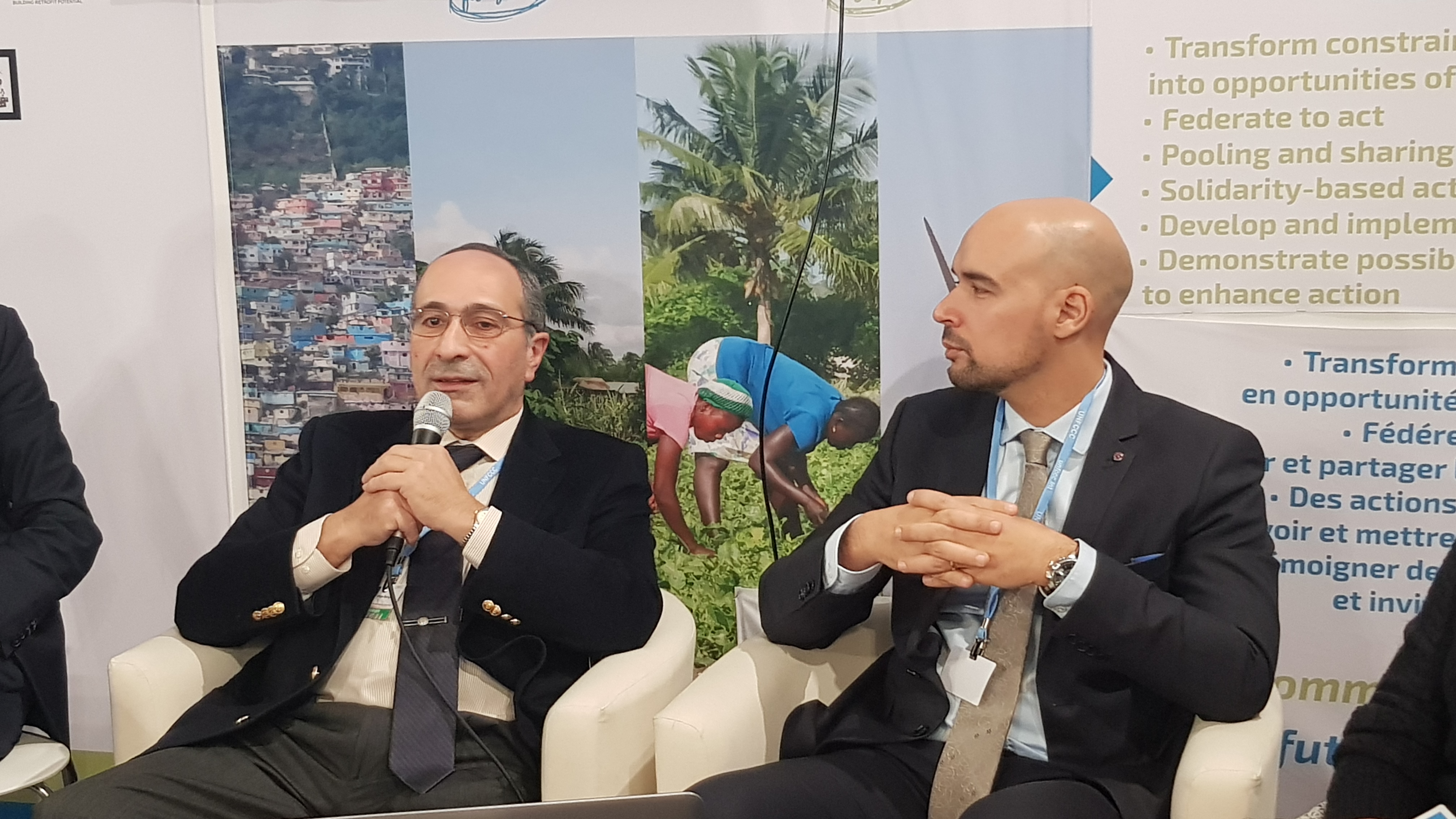
Jorge Borrego (UfM), Constantin Tsakas (IM, FEMISE)
Par ailleurs, tous les intervenants ont souligné l’importance de la mise en place de mécanismes fiables de suivi et de communication de l’information. La région sud-méditerranéenne manque de données sur les problèmes environnementaux et le changement climatique, ce qui en fait une priorité pour la région. Constantin Tsakas, délégué général de l’Institut de la Méditerranée et secrétaire général du FEMISE, a souligné le besoin d’un observatoire de données qui permettrait de recueillir des données fiables sur les problèmes environnementaux en Méditerranée, qui seraient rendues accessibles au public, permettant ainsi l’élaboration de politiques plus adéquates et flexibles. Il a également souligné le fait que les questions environnementales doivent être traitées dans une approche thématique transversale. Les chercheurs et les décideurs doivent considérer les questions environnementales, le changement climatique et la transition vers les énergies renouvelables non seulement comme des priorités isolées mais surtout comme des problèmes transversaux qui influencent et sont influencés par des secteurs tels que l’agriculture, l’énergie, l’urbanisme, etc.

Joël Guiot (MEDECC), Stéphane Pouffary (ENERGIES2050), Jorge Borrego (UfM)
De plus, Stéphane Pouffary, directeur exécutif d’ENERGIES 2050, a souligné l’importance du partage des connaissances et de la mise en place de mécanismes de collaboration concrets entre les territoires de la région euro-méditerranéenne.
Il a présenté l’édition 2018 du rapport ENERGIES2050/FEMISE/Institut de la Méditerranée intitulé «Les défis du changement climatique en Méditerranée», rapport phare traitant des questions de changement climatique et des différentes implications du réchauffement de la planète et de la dérégulation du climat dans la région. «Les scientifiques doivent démontrer les opportunités en transformant les contraintes en investissements potentiels et ce rôle est possible grâce à l’existence d’un processus de révision transparent et cohérent» a déclaré Stéphane Pouffary.

Constantin Tsakas (IM, FEMISE), Karolina Zubel (CASE), Abeer Elshenawy (American University in Cairo)
Dans une approche plus sectorielle, Karolina Zubel, analyste des politiques énergétiques et climatiques du think-tank CASE (membre de FEMISE), a également présenté le projet EUROPACE que CASE coordonne. Cette initiative est un mécanisme de financement visant à libérer le potentiel de déploiement des technologies d’économie d’énergie et de production d’énergie auprès des ménages. En pratique, EuroPACE est une forme de financement non fiscal s’appuyant sur une relation existante entre les municipalités et leurs citoyens: le système d’impôt foncier (taxe sur la propriété). Il s’agit d’un mécanisme de financement utilisé pour collecter le remboursement de l’argent prêté pour des investissements dans des rénovations de bâtiment répondant à un «objectif public valable». Elle a ajouté que le besoin de bâtiments plus durables est partagé, à la fois, au nord et au sud de la Méditerranée où la rénovation doit être plus accessible et plus abordable. Le potentiel de réplication d’EUROPACE dans le sud de la Méditerranée est considérable. Au Maroc, par exemple, le cadre juridique comprend deux pistes potentielles pour la mise en œuvre d’EUROPACE, à la fois les taxes locales et les conditions de rupture. De plus, les municipalités étant des acteurs actifs de l’action pour le climat, les canaux de mise en œuvre sont adéquats pour la réplication au niveau local.
Abeer Elshennawy, de l’Université américaine du Caire, a conclu sur les implications d’un programme de recherche euro-méditerranéen sur le changement climatique, montrant les possibilités d’inclure les questions environnementales dans les accords commerciaux bilatéraux et multilatéraux, tant pour la croissance économique que pour l’action climatique. L’agriculture et le commerce ont été les deux principaux secteurs jugés par Dr. Elshennawy comme particulièrement importants pour l’action climatique dans la région, en général, et dans le contexte égyptien, en particulier. Afin de proposer des solutions concrètes aux défis actuels, nous devons collaborer à la fois avec les acteurs de la région Afrique du Nord, Moyen-Orient et les partenaires européens a souligné Dr. Elshennawy.
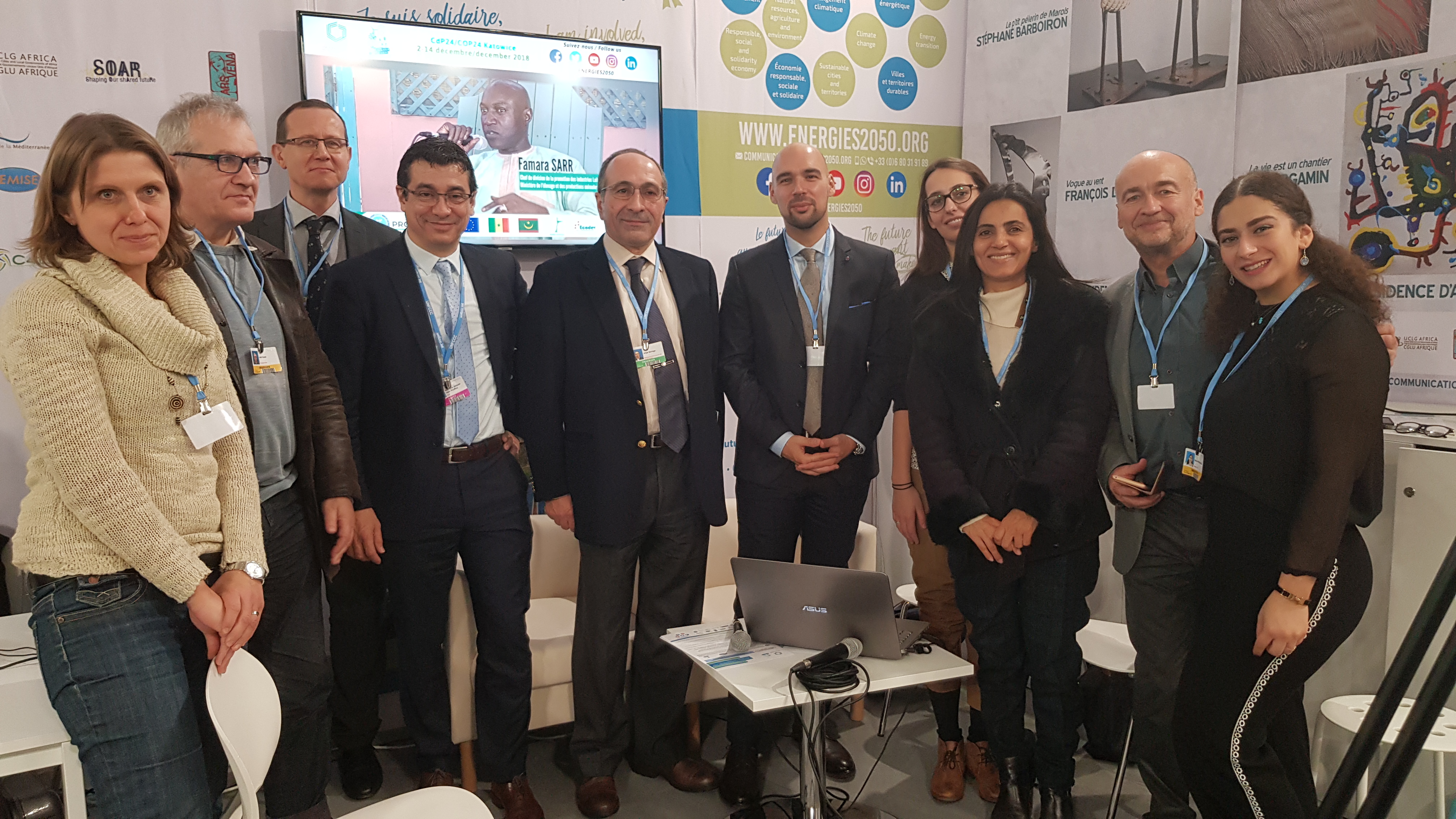
Les panelistes à l’atelier COP24, IM / FEMISE/ Union pour la Méditerranée et ENERGIES2050
Le secrétaire général adjoint de l’UpM a reconnu l’importance de l’Intégration Commerciale en tant que thème prioritaire dans la région de la Méditerranée du Sud, pour l’action climatique et, plus généralement, pour la promotion d’un partenariat renforcé. Il a souligné qu’un rapport comandité par l’UpM sur l’Intégration Commercial publié en 2012 et produit par des chercheurs du FEMISE, Patricia Augier et Jean-Louis Reiffers, montrait que 90% des échanges a l’intérieur de l’UpM étaient des échanges entre pays de l’UE, 9% correspondaient aux échanges entre l’UE et les 15 pays partenaires, alors que les échanges entre pays partenaires UpM ne représentaient que 1% du total.
En conclusion de la table ronde, tous les intervenants ont convenu de l’importance d’inclure toutes les initiatives de lutte contre le changement climatique dans un dialogue dynamique évolutif entre les différents acteurs et qui donne la parole à toutes les parties prenantes.
Consultez également nos entretiens »IM-FEMISE COP24 Video Interviews, réalisés à l’occasion des événements au Pavillon ENERGIES 2050 (11/12/2018 et 12/12/2018), organisés par l’Institut de la Méditerranée (IM), FEMISE, ENERGIES 2050 et l’Union pour la Méditerranée.
11/12/2018
L’implication des gouvernements infranationaux euro-méditerranéens dans la lutte contre le changement climatique (Compte rendu de l’Atelier COP24)
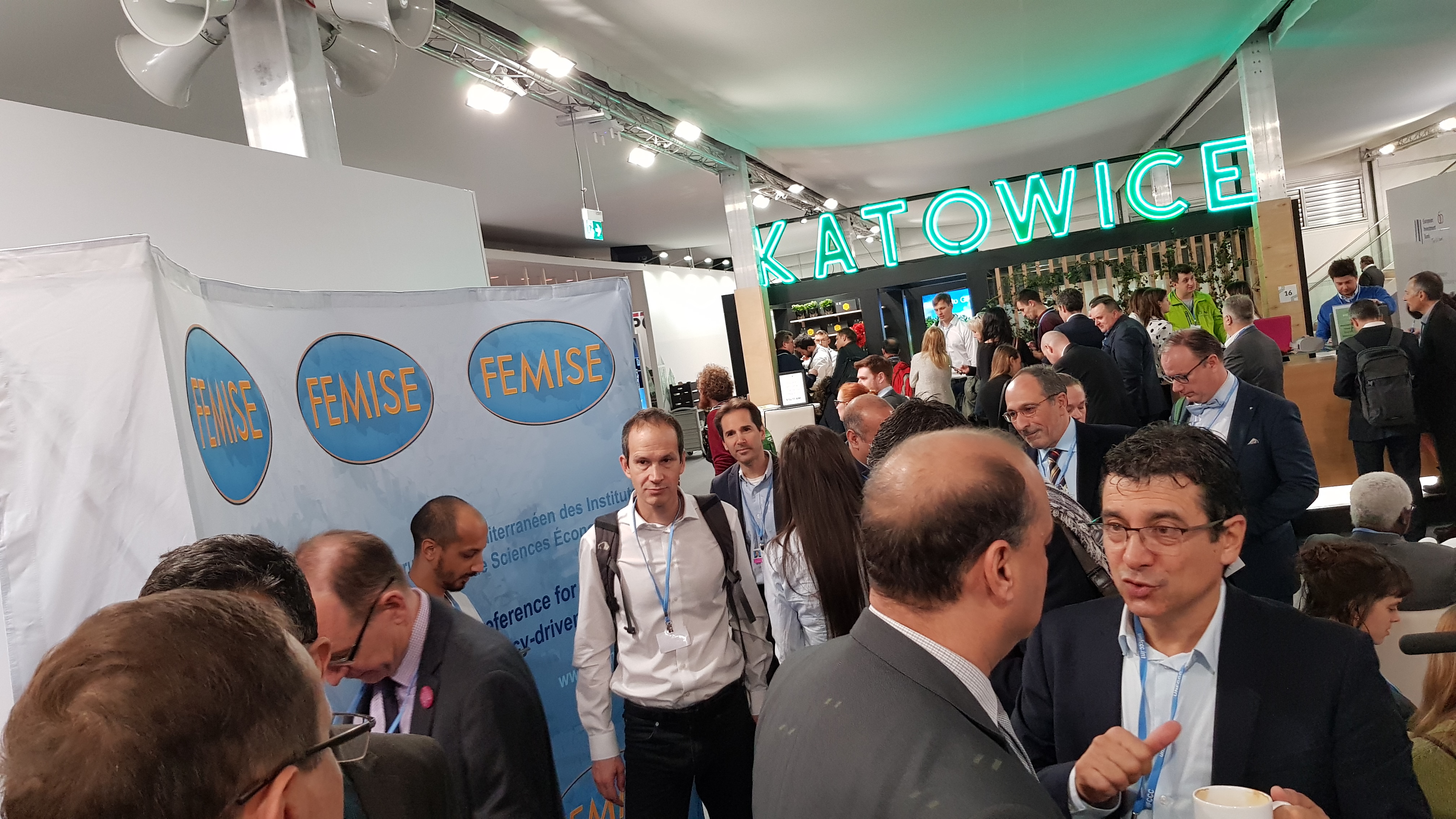
COP24, Katowice, Pologne, pavillon ENERGIES2050
Le 11 Décembre 2018, à la 24e conférence annuelle (COP24) sur la lutte contre le changement climatique (Katowice, Pologne), a eu lieu un side-event co-organisé par l’Union pour la Méditerranée, l’Institut de la Méditerranée, FEMISE et ENERGIES2050 sur le thème de « L’implication des gouvernements infranationaux euro-méditerranéens dans la lutte contre le changement climatique »
Cet atelier, réunissant un panel de spécialistes climat, d’économistes et de représentants politiques a permis de discuter autour du nouveau rapport « Les gouvernements infranationaux Euro-Med dans la lutte contre le changement climatique : Cadre d’action, exemple de la région SUD Provence-Alpes-Côte d’Azur et opportunités de coopération à l’échelle méditerranéenne ». Cette étude propose une photographie du contexte, du potentiel et de quelques exemples d’actions des territoires méditerranéens face à la question du changement climatique.

Constantin Tsakas (Délégué Général IM, Sec. Général FEMISE), Jorge Borrego (Secrétaire général adjoint UpM), Magnus Berntsson (Président de l’Assemblé Européennes des régions)
Comme le suggère le rapport, le cadre européen permet aux régions de mettre en place des stratégies efficaces de résilience et de lutte contre les changements climatiques, a admis Magnus Berntsson, Président de l’Assemblé Européennes des régions.
D’après Jorge Borrego, Secrétaire général adjoint pour l’énergie et l’action pour le climat au Secrétariat général de l’UpM, ce serait vraiment au niveau des territoires que l’action climatique peut aboutir. Les régions sont les véritables moteurs d’action permettant d’instaurer le changement et d’assurer la pérennité des initiatives agissant comme médiateur entre les autorités publiques et les locaux. Les priorités pour la coopération territoriale sur le Climat et l’Energie dans la région Sud Med résident donc dans la création d’un environnement permettant la prolifération des initiatives pour le climat au sein d’une action jointe et coordonnée entre les acteurs a différents niveaux et dans différents secteurs.
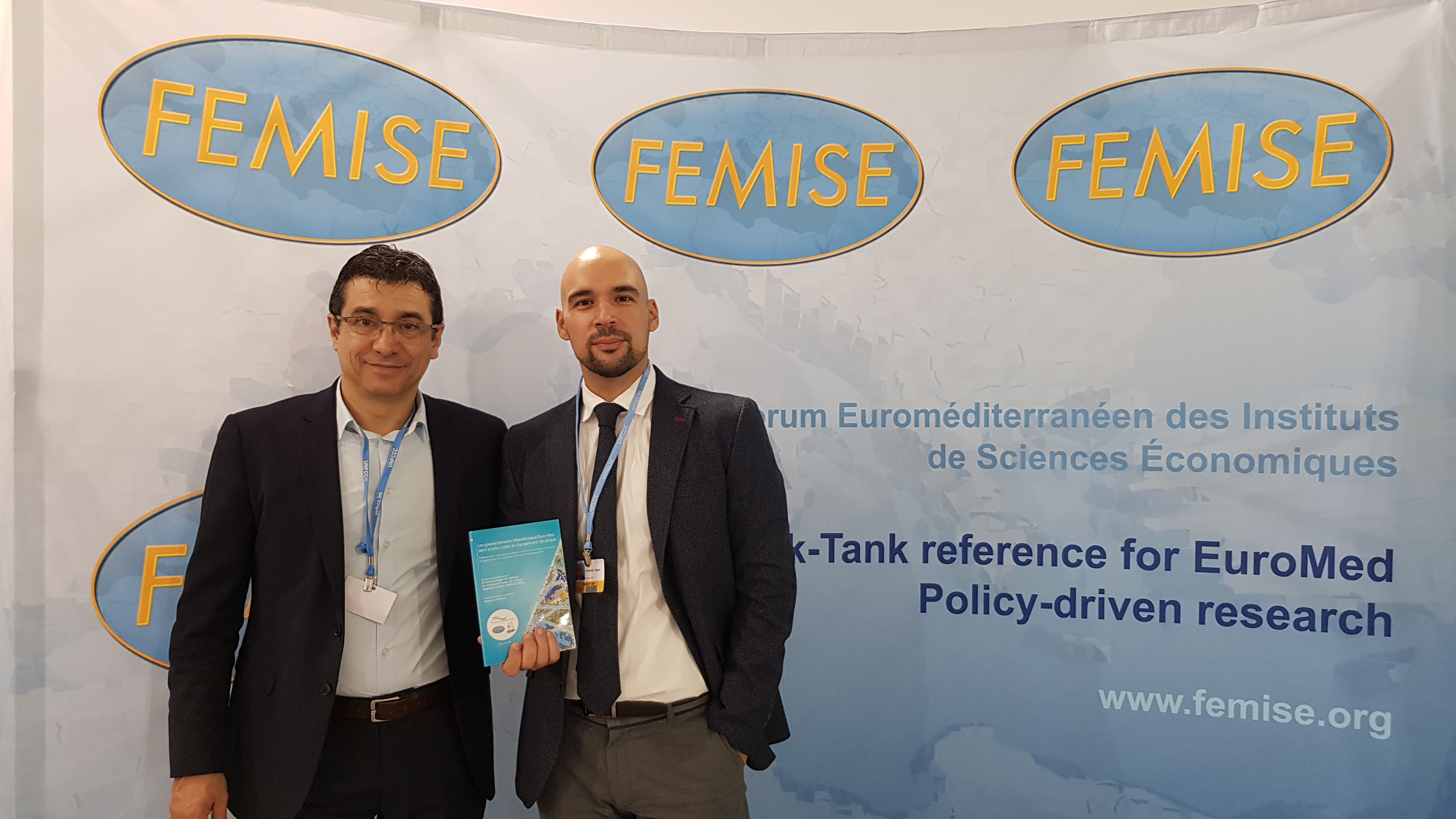
Stéphane Pouffary (ENERGIES2050) et Constantin TSAKAS (IM, FEMISE) présentent l’étude IM/FEMISE/ENERGIES2050
« La région SUD PACA peut servir d’exemple aux autres territoires méditerranéens dans le but de capitaliser sur des initiatives et de partager l’expérience de cette région pour une lutte plus efficace ». C’est ainsi que Dr. Constantin Tsakas (Délégué Général de l’Institut de la Méditerranée, Secrétaire Général du FEMISE) l’un des directeurs de publication de l’étude, a décrit l’utilité de revenir sur les leçons que le cas de la région SUD met en avant. Une plateforme au service des territoires, offrant la possibilité de capitaliser, d’échanger, de former, de permettre un dialogue avec le monde de la statistique régionale et d’offrir une assistance technique, pourrait être soutenue au niveau régional. En outre, sur le plan EU-Med, une implication du secteur privé pourrait apporter des réponses intéressantes. Parmi les propositions d’actions, la création d’un « ERASMUS de l’entreprenariat social et environnemental » pour cultiver les compétences entrepreneuriales à impact social et environnemental notamment à l’égard de jeunes.
Un accent particulier a été mis sur le partage et la collaboration entre les différentes parties prenantes de l’action pour le climat et la résilience. Stéphane Pouffary, Directeur ENERGIES 2050 appelle ainsi à « aller au delà du combat contre le changement climatique pour avoir une lutte coordonnée et positive pour le bien être et le développement durable ». D’ailleurs, comme l’a souligné Magnus Berntsson, développement durable et ODD ne peuvent pas être détachés des CDNs et des engagements des accords de Paris. Les traiter séparément serait réducteur et non-efficace. Ainsi, la mise en réseau au Sud de la Méditerranée permettrait non seulement une meilleure approche vis-à-vis des ODD mais également aurait une incidence positive sur les engagements nationaux pour le climat, point partagé par tous les panélistes.
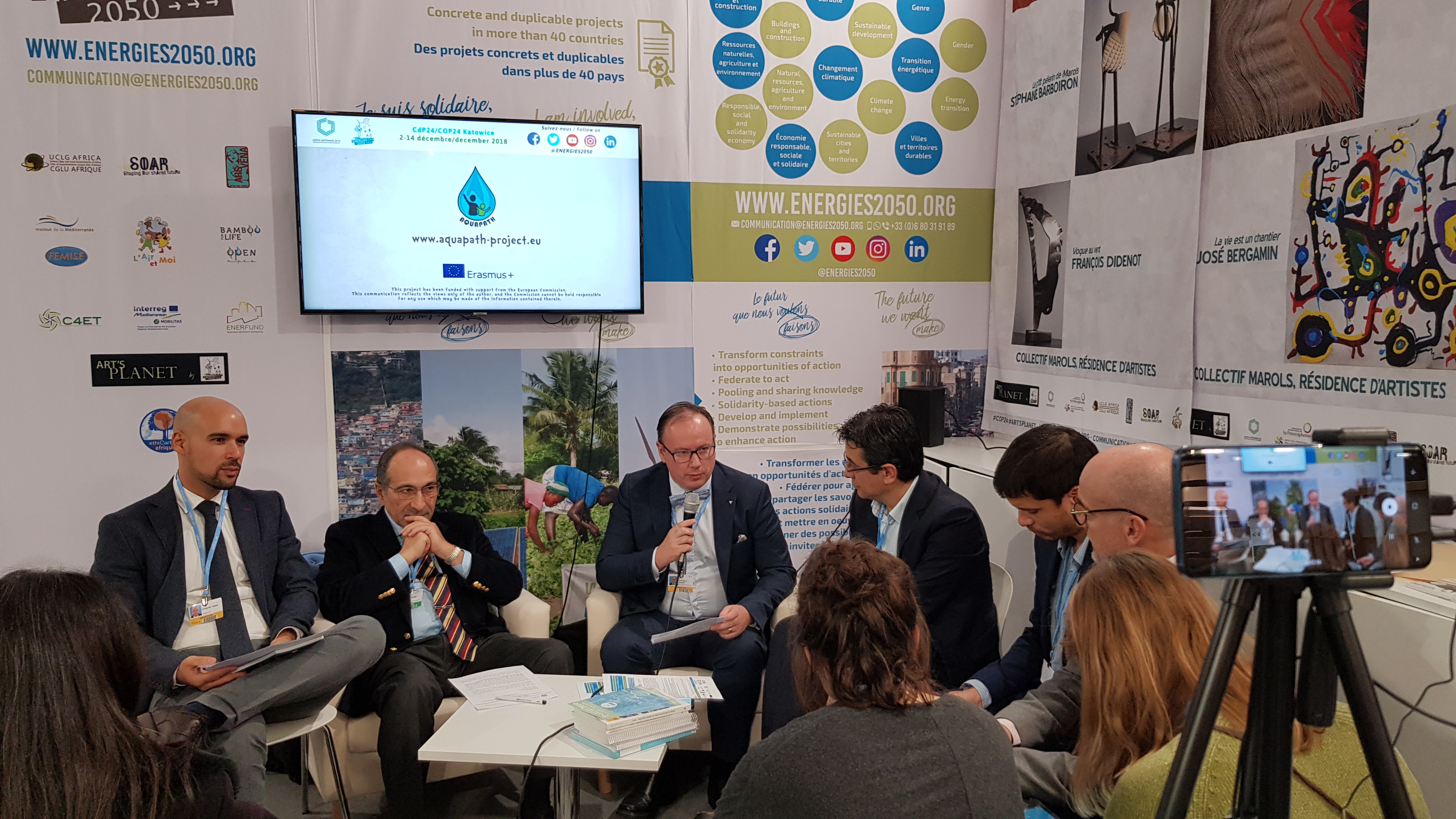
Les panelistes à l’atelier COP24, IM / FEMISE/ Union pour la Méditerranée et ENERGIES2050
Pour favoriser ces initiatives pour le climat et mettre en avant les conditions nécessaires à la collaboration entre les différentes parties prenantes, il est essentiel de créer un cadre légal incitatif complet et qui soutient les initiatives privées et publiques dans leur lutte contre le changement climatique et pour le renforcement des capacités des sociétés locales. Jean-Charles Lardic, Directeur de la Prospective, Ville de Marseille, a mis l’accent sur l’importance d’apporter un cadre légal a la coopération Euro-Med, la rive Sud de la Méditerranée bénéficierait grandement d’un rapprochement sur les questions juridiques et de cadre légal pour l’action climat.
L’éclaircissement des cadres légaux en matière d’action pour le climat dans la région Sud Med permettrait également de rendre la région plus attirante pour les bailleurs de fonds étrangers apportant ainsi plus de transparence et d’assurance vis-à-vis aux investissements. Carlos de Freitas, Directeur des programmes, Fonds mondial de développement des villes, a ainsi insisté sur le fait que pour permettre un financement durable en Méditerranée, une expertise sur les questions des climats doit être renforcée au niveau des Etats, en général et des territoires, en particulier.
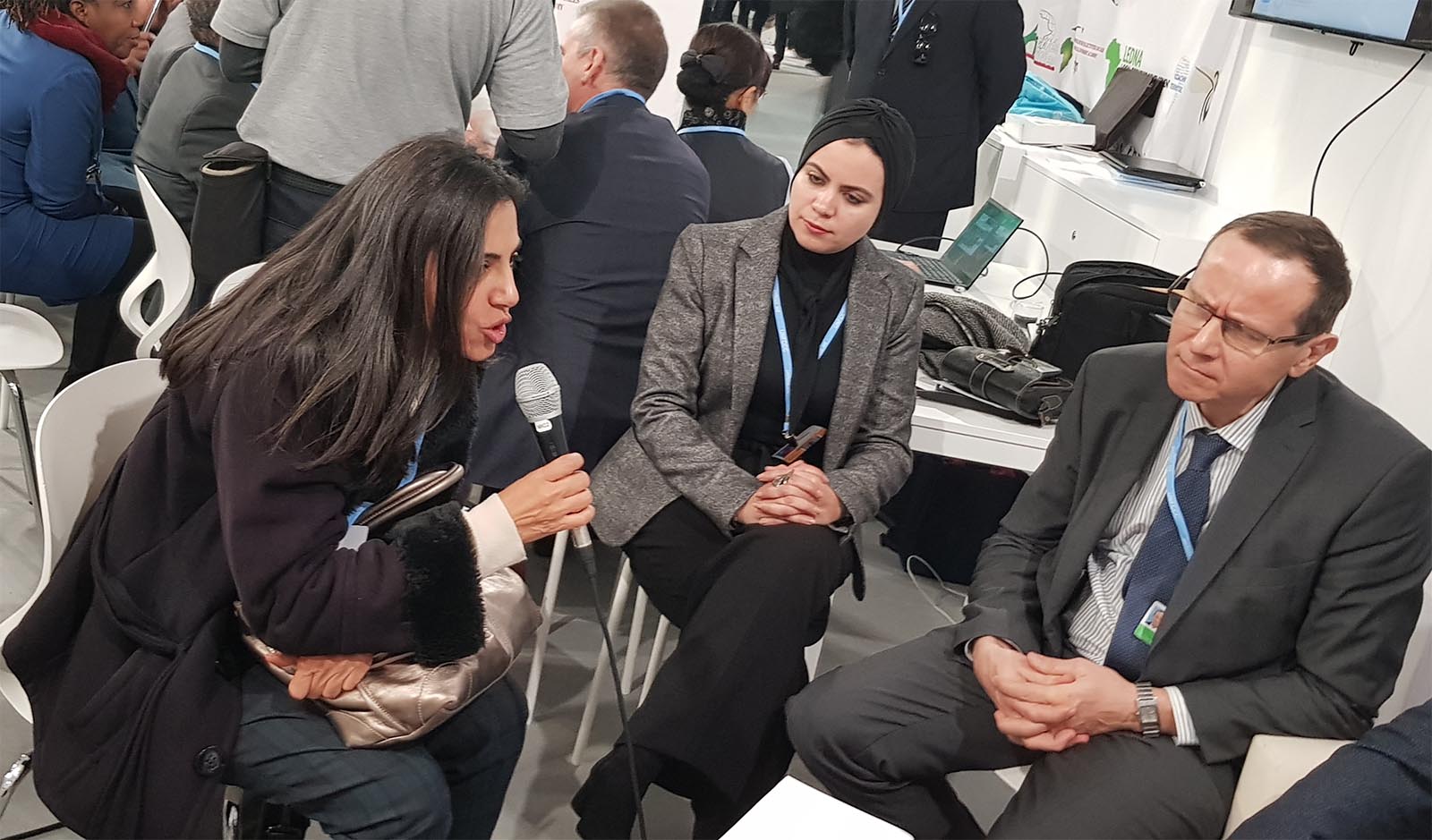
Abeer ElShenawy (American University in Cairo, FEMISE), Hajar Khamlichi (Mediterranean Youth Climate Network) et Arnault Graves (Union pour la Méditerranée)
De plus le rôle des jeunes de la région Sud-Méditerranée a été souligné lors des débats qui ont clôt l’atelier. L’intervention de Hajar Khamlichi, présidente du Mediterranean Youth Climate Network, a mis l’accent sur le fait que les jeunes portent des solutions innovantes et des projets à sensibilité socio-écologique qui permettraient de créer un vrai cercle vertueux pour un changement structurel provenant de l’intérieur des écosystèmes locaux. D’où la nécessité de les appuyer dans leur projet d’entreprenariat social, sujet qui a été abordé lors de l’exposition des solutions suggérées par le rapport et présentés par Guillaume De Laboulaye, expert ENERGIES 2050 et membre FEMISE.
Retrouvez le rapport sur : https://www.femise.org/publications/rapport_thema/rapport-les-gouvernements-infranationaux-euro-med-dans-la-lutte-contre-le-changement-climatique/
11/12/2018
COP24 : 3 questions à…Dr. Constantin Tsakas, Délégué Général de l’Institut de la Méditerranée – Secrétaire Général FEMISE
- Qui sont l’Institut de la Méditerranée et le FEMISE ?
L’Institut de la Méditerranée (IM, Marseille) est un institut de sciences économiques, fondé en 1994 par la Région PACA, le Conseil Général Bouches-du-Rhône, la Mairie de Marseille et la CCIMP. Son objectif initial : faire de Marseille un pôle de réflexion majeur sur le devenir de la zone euro-méditerranéenne en collaborant avec l’Europe et les pays méditerranéens du Sud. C’est ainsi que l’IM produit des recherches et actions pour promouvoir le développement des territoires méditerranéens et pour faire avancer la coopération territoriale euro-méditerranéenne. C’est également ainsi que l’IM avec ERF (Economic Research Forum, Caire) sont co-fondateurs et coordonnateurs du FEMISE, Think-Tank historique basé à Marseille et qui regroupe plus de 100 instituts de recherche du Nord et du Sud de la Méditerranée. FEMISE, financé en grande partie par la Commission Européenne (DGNEAR) a un agenda de recherche qui s’articule autour de 4 axes thématiques : Intégration Commerciale, Développement du Secteur Privé, Climat et Energie et, Inclusivité.
Avec notre approche, que nous qualifions comme « Science for Policy » & « Science for Business », nous souhaitons aller vers un développement socio-économique inclusif et durable dans la région euro-méditerranéenne. Avec nos recherches et un dialogue multi-acteurs, nous sensibilisons les acteurs étatiques du Nord et surtout du Sud au besoin de développer des énergies abordables et vertes à l’horizon 2030 (ODD 7). En outre, nos actions contribuent à sensibiliser et agir sur d’autres ODD, plus particulièrement l’ODD9 « Industrie, Innovation et Infrastructure » qui est un vecteur clé de croissance économique et de développement. C’est pour cela que nous participons activement au projet THE NEXT SOCIETY pour soutenir l’innovation en Méditerranée. En outre nos actions répondent aux problématiques de l’ODD10 « Inégalités Réduites ». Ici, FEMISE et IM ont entrepris un ambitieux effort pour l’émergence d’écosystèmes de l’Entrepreneuriat Social (ES), en associant les communautés de coopération UE-MED avec les principaux acteurs d’impact social et de soutien à l’entrepreneuriat. Nous avons récemment réunis certains de ces acteurs lors d’un atelier « Social Change Makers » au sommet EMERGINGVALLEY2018 (Marseille, 20 Novembre 2018).
- Vous soulignez que le changement climatique engendre des complexités socio-économiques accrues dans la région euro-méditerranéenne. Quelle est la situation dans la région et quelles réponses espérez-vous pouvoir apporter ?
En Méditerranée, le changement climatique implique de nombreux risques pour les écosystèmes et pour le bien-être des populations. Les territoires méditerranéens d’Europe sont les plus vulnérables du continent et les territoires méditerranéens du Sud et de l’Est du bassin sont en première ligne au niveau mondial. Par conséquent, nous pensons qu’il est avant tout crucial d’actualiser et de consolider les connaissances scientifiques sur les perturbations climatiques et environnementales dans le bassin méditerranéen et de les rendre accessibles aux décideurs, aux principaux acteurs et aux citoyens. C’est pour cela que nous co-organisons un atelier avec l’Union pour la Méditerranée et ENERGIES 2050 (12 Décembre 2018) à l’occasion de la COP24 sur le Pavillon d’ENERGIES 2050 et de CGLU Afrique qui permettra d’échanger entre universitaires, praticiens et représentants institutionnels sur les moyens d’enrichir le programme de recherche et les actions Euro-Med en matière de changement climatique. En s’associant avec l’UpM, la portée des messages pour un impact sur le développement durable en Méditerranée ne peut qu’être renforcée.
Dans notre stratégie nous souhaitons intensifier nos efforts sur trois axes :
- En continuant à financer la recherche sur les Stratégies de Développement Durable (DD) et Inclusif à suivre en Méditerranée et sur les questions liées au Changement Climatique,
- En contribuant à mettre en place des Panels de Plaidoyer nationaux au Sud pour agir directement auprès des décideurs politiques,
- En contribuant au développement d’un Observatoire de Données de DD sur la Méditerranée.
Nous privilégions une approche inclusive multi-acteurs et appelons toutes les entités concernées à contribuer à cet effort commun. Le partage de moyens et de savoirs communs est essentiel.
- Justement, concernant le partage de savoirs, vous présentez l’étude « Les gouvernements infranationaux Euro-Med dans la lutte contre le changement climatique » lors d’un second atelier COP24. En quoi est-ce que la région SUD Provence-Alpes-Côte d’Azur, illustrée dans votre rapport, offre t’elle des exemples à suivre pour l’UE-Med?
Un autre atelier, en collaboration avec les mêmes partenaires, aura lieu le 11 Décembre et permettra de présenter l’étude que l’IM a porté en partenariat avec FEMISE et ENERGIES 2050 sur « Les gouvernements infranationaux Euro-Med dans la lutte contre le changement climatique : Cadre d’action, exemple de la région SUD Provence-Alpes-Côte d’Azur et opportunités de coopération à l’échelle méditerranéenne ».
Ce que l’on observe c’est que globalement, l’action des collectivités, en France en général et en Région Sud en particulier, bénéficie d’un cadre légal incitatif et cohérent, qui est appuyé par des dispositifs d’information régionaux fournis, mais aussi par la possibilité de mobiliser de nombreux leviers de financements européens, nationaux et régionaux. Les collectivités de la Région SUD se sont engagées dans la mise en place de stratégies climat intégrées sous la forme de PCET (Plans Climat Energie Territorial) puis de PCAET (Plans Climat Air Energie Territoire). Même si des choses restent à améliorer, le point de vue que nous défendons dans l’étude est que la Région SUD peut donc apporter une réelle contribution sur la question climat/territoire dans la stratégie de coopération avec les territoires méditerranéens du Sud et de l’Est.
Nos réflexions soulignent que la Région SUD pourrait apporter de précieux retours d’expériences, en organisant notamment le rapprochement entre les résultats de la science et les décideurs et la production d’informations et de connaissances sur les questions de développement local/climat qui reste à construire dans de nombreux pays. Par ailleurs, une plateforme au service des territoires en la matière offrant la possibilité de capitaliser, d’échanger, de former, de permettre un dialogue avec le monde de la statistique régional et d’offrir une assistance technique pourrait être supportée au niveau régional, notamment à travers des initiatives naissantes comme par exemple la Maison Méditerranéenne du Climat.
Notre étude souligne aussi, de manière plus générale, qu’une implication du secteur privé sur le plan de la coopération EU-Med pourrait apporter des réponses intéressantes. Les propositions d’actions à entreprendre sur le plan de la coopération euro-méditerranéenne pourraient entre autres inclure la création d’un « ERASMUS de l’entreprenariat social et environnemental » pour cultiver les compétences entrepreneuriales à impact social et environnemental notamment à l’égard de jeunes. De nombreuses autres pistes de réflexion sont avancées que je vous invite à découvrir en lisant notre étude, qui est disponible depuis le 7 Décembre 2018 sur le site du FEMISE.
Article en collaboration avc ENERGIES2050 : http://energies2050.org/
09/12/2018
FEMISE et l’INSTITUT DE LA MEDITERRANEE (IM) partenaires d’un troisième atelier COP24 ! (13 Décembre, Katowice, Pologne)

FEMISE et l’INSTITUT DE LA MEDITERRANEE (IM) sont ravis de s’associer à l’atelier « La Transition Juridique, une dynamique de changement lancée par des acteur locaux pour permettre de relever les défis climatiques dans une vision du développement durable fondée sur l’humain », organisé par la ville de Marseille et Energies 2050. Sont également partenaires le Barreau de Marseille, Les Amis de la Déclaration Universelle des Droits de l’Humanité, Green Cross France et Territoires.
Après avoir donné un bref éclairage sur la vision prospective et humaniste de la ville durable de demain, l’objectif de l’atelier est d’explorer la question de la Transition Juridique. Seront alors présentés et débattus les premiers travaux de la Commission méditerranéenne de réflexion prospective sur la Transition Juridique qui a entrepris de dresser un panorama des évolutions juridiques jugées nécessaires par les acteurs locaux, depuis la Déclaration Universelle des Droits de l’Humanité, jusqu’à la nécessité de donner plus de liberté aux territoires pour développer des approches horizontales et créer de nouvelles synergies.
Dr Constantin TSAKAS, Délégué Général de l’Institut de la Méditerranée et Secrétaire Général du FEMISE interviendra sur le thème « De nouveaux modèles de développement local, inclusifs et durables, qui imposent de revisiter les cadres juridiques ».
Le programme de l’atelier est disponible en cliquant ici.
07/12/2018 (MISE A JOUR)
Rapport « Les gouvernements infranationaux Euro-Med dans la lutte contre le changement climatique »
L’association INSTITUT DE LA MEDITERRANEE (IM), le FEMISE et l’association ENERGIES 2050, annoncent la publication du rapport « Les gouvernements infranationaux Euro-Med dans la lutte contre le changement climatique : Cadre d’action, exemple de la Région SUD Provence-Alpes-Côte d’Azur et opportunités de coopération à l’échelle méditerranéenne ».
Ce rapport s’articule en trois chapitres et propose une photographie des initiatives et dynamiques en cours au niveau de la Région SUD Provence-Alpes-Côte d’Azur dans la lutte contre le changement climatique. Il s’inscrit également dans le cadre plus large de la coopération euro-méditerranéenne.
Le rapport est disponible au téléchargement en cliquant ici
07/12/2018
FEMISE et l’UpM s’associent pour deux ateliers COP24 ! (11 et 12 Décembre, Katowice, Pologne)
FEMISE et l’Institut de la Méditerranée sont ravis d’annoncer leur collaboration avec l’Union pour la Méditerranée (UpM) et ENERGIES2050 (membre FEMISE) dans le cadre de deux ateliers à la COP24 ! (Katowice, Pologne)
Les programmes des deux ateliers (11 et 12 décembre) sont disponibles en cliquant ici (11/12) et ici (12/12).
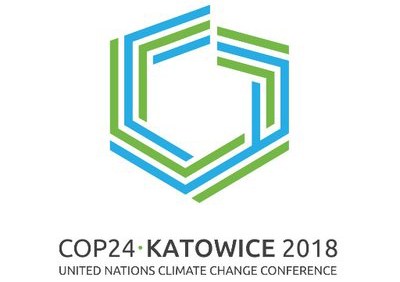
ATELIER 1 « L’implication des gouvernements infranationaux euro-méditerranéens dans la lutte contre le changement climatique » (11/11/20118) : Face au changement climatique, les espaces méditerranéens d’Europe figurent parmi les plus vulnérables du continent, et les territoires méditerranéens du Sud et de l’Est du bassin sont en première ligne au niveau mondial. Les impacts du changement climatique y sont dès à présent couteux économiquement et socialement, remettent en jeu l’attractivité des territoires et défient les objectifs européens de cohésion des régions et de croissance inclusive dans les pays de la rive Sud.
Cette table ronde diffusée live sur Internet sera l’occasion de présenter officiellement l’étude IM/FEMISE/ENERGIES 2050 « L’implication des gouvernements infranationaux euro-méditerranéens dans la lutte contre le changement climatique : cadre d’action, exemple de la région SUD-Provence Alpes Côte d’Azur et opportunités de coopération à l’échelle méditerranéenne sur l’ambition de l’étude Climat-Territoires ». Après une présentation des enjeux et défis mais aussi des opportunités d’agir, les discussions multi-acteurs (avec des représentants de l’UpM, le président de l’Assemblée des régions d’Europe, des experts du FEMISE, etc.) permettront un dialogue approfondi sur les dynamiques de coopération Euro-Med. Il s’agira également de situer la gouvernance climatique locale dans le contexte plus large de l’Europe et de l’axe Europe-Méditerranée-Afrique.
ATELIER 2 « Les complexités socio-économiques liées au changement climatique : Vers un agenda et des actions de recherche EuroMed » (12/11/20118) : En Méditerranée, le changement climatique implique de nombreux risques pour les écosystèmes et pour le bien-être humain. Par conséquent, il est crucial d’actualiser et de consolider les meilleures connaissances scientifiques sur les perturbations climatiques et environnementales dans le bassin méditerranéen et de les rendre accessibles aux décideurs, aux principaux acteurs et aux citoyens. L’objectif de cette table ronde diffusée est d’échanger entre universitaires, praticiens et représentants institutionnels sur les moyens d’enrichir le programme de recherche et les actions Euro-Med en matière de changement climatique.




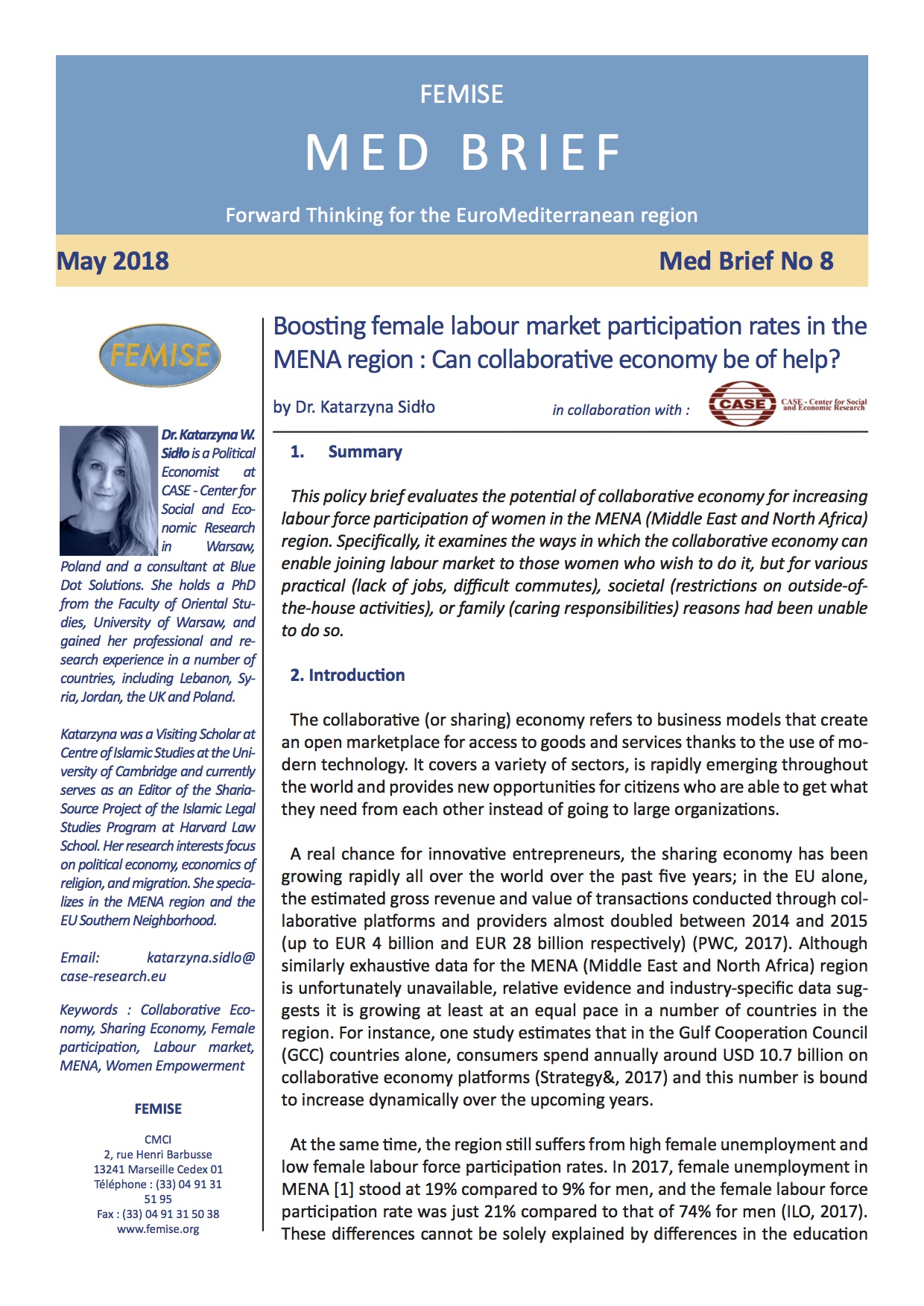 La série de Policy Briefs du FEMISE intitulée MED BRIEF ambitionne de fournir une réflexion novatrice pour la région euro-méditerranéenne. Les Policy Briefs contiennent une analyse succincte et politiquement pertinente sur d’importantes questions EuroMed et présentent aux décideurs politiques les points de vue des chercheurs FEMISE et des partenaires du réseau.
La série de Policy Briefs du FEMISE intitulée MED BRIEF ambitionne de fournir une réflexion novatrice pour la région euro-méditerranéenne. Les Policy Briefs contiennent une analyse succincte et politiquement pertinente sur d’importantes questions EuroMed et présentent aux décideurs politiques les points de vue des chercheurs FEMISE et des partenaires du réseau.
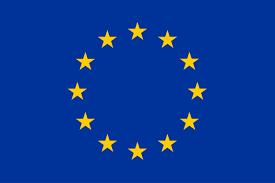 Le Policy Brief a été réalisé avec l’aide financière de l’Union européenne dans le cadre du programme FEMISE. Le contenu de ce document relève de la seule responsabilité des auteurs et ne peut en aucun cas être considéré comme reflétant la position de l’Union européenne.
Le Policy Brief a été réalisé avec l’aide financière de l’Union européenne dans le cadre du programme FEMISE. Le contenu de ce document relève de la seule responsabilité des auteurs et ne peut en aucun cas être considéré comme reflétant la position de l’Union européenne.